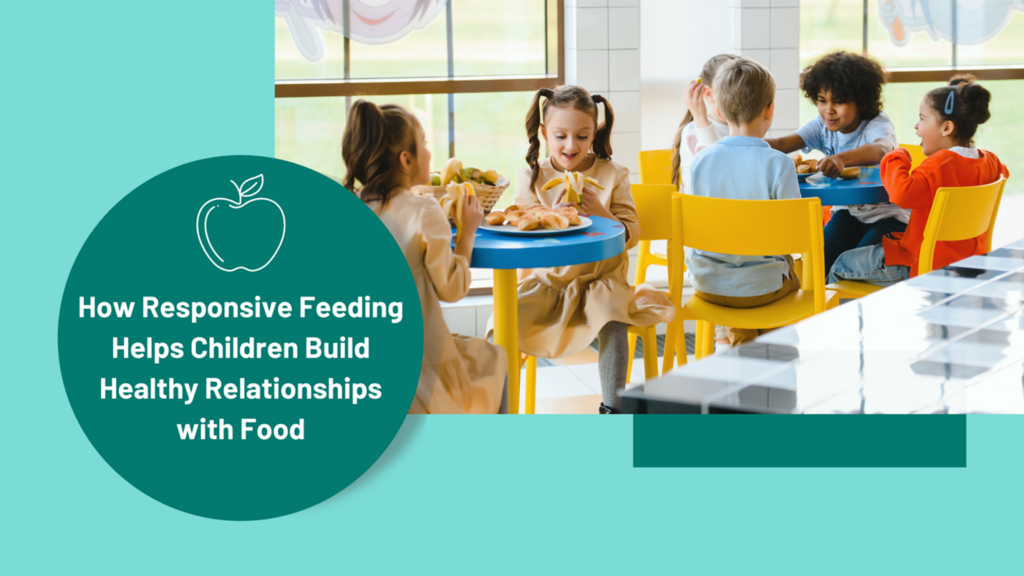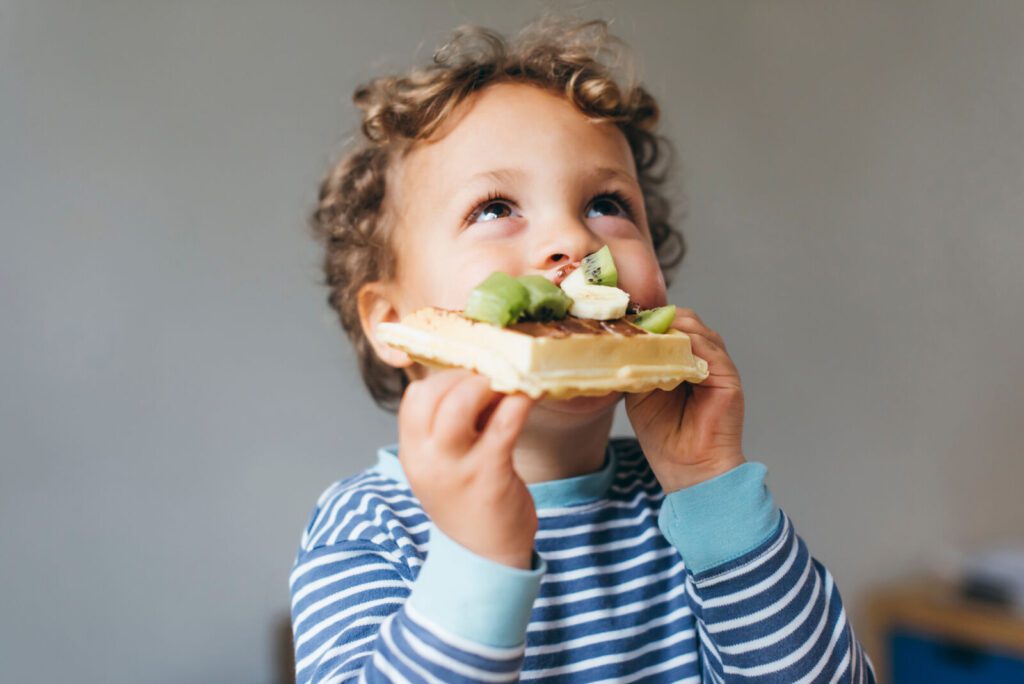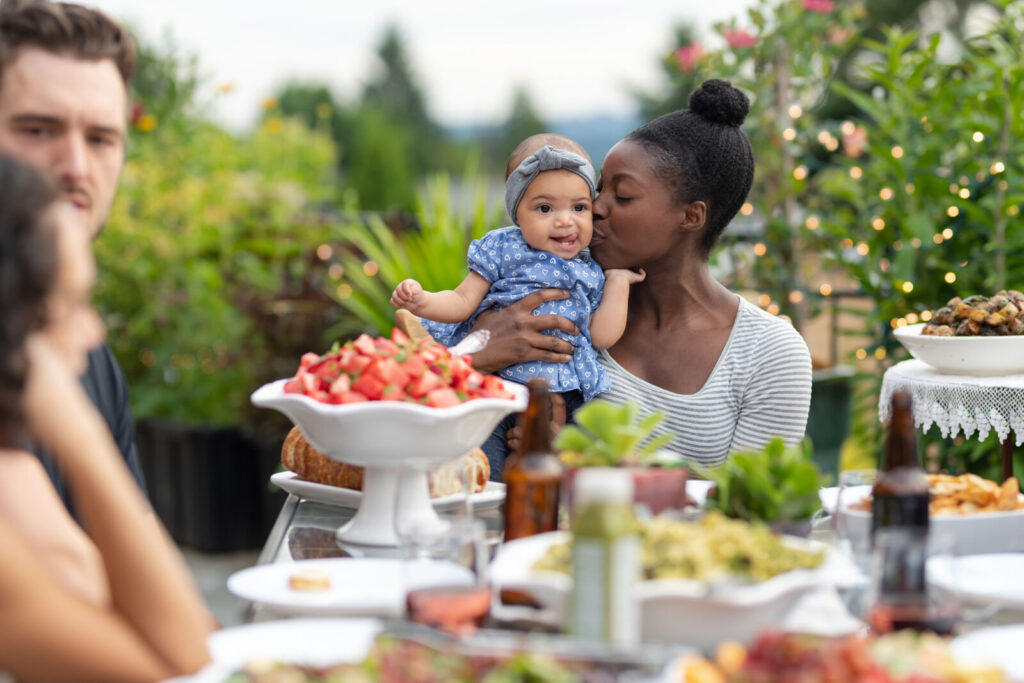Our child care programs, summer camp, and forest school are child-centered and inquiry based.

By Novella Lui, RD, MHSc
Reflecting on your childhood, have you ever been told to finish the food on your plate, even when you already felt full?
Have you considered whether these experiences could have impacted your relationship with food as an adult?
Building a healthy relationship with food in the early years helps nurture children’s future health. Doing so contributes to positive attitudes around eating and food, feeling comfortable around food, and promoting a healthy meal pattern based on your child’s hunger and fullness cues.

Discover what responsive feeding is and how you can practice responsive feeding with your child.
What is responsive feeding?
Responsive feeding is a feeding style where the child responds to their hunger and fullness cues and communicates these signals to their caregiver through head and body movements and facial expressions. Based on the child’s body language, the caregiver responds by offering more or stopping to offer food.

Responsive feeding helps children to recognize and regulate their food intake. Research shows that caregivers who do not practice responsive feeding could increase the child’s risk of ignoring their hunger signals, alter their ability to respond to food choices, regulate their emotions, and more later in life.
Ways to Practice Responsive Feeding
Responsive feeding starts as soon as when the child is born when they are offered breastmilk and/or formula.
A hungry infant could show the following signs:
- Puts their fist in their mouth
- Turns their head toward the breast or the bottle
- Smacks their lips
- Cries
For babies over six months of age who have started solid foods and for children, they could display these signs when they are hungry:
- Get excited when seeing food in sight
- Lean towards food
- Pay attention and follow the food with their eyes

When you see your infant or child displaying these cues, respond positively and offer the available food.
Similarly, your infant or child will also let you know they are done eating.
When an infant is full from drinking breastmilk and/or formula, they:
- Stop feeding
- Unlatch themselves from the nipple
- Close their mouth and turns their head away
- Spit out milk
- Relax their hands
For older babies and children who have their tummies full and satisfied, they will:
- Close their mouth
- Turn their head away from the plate or bowl
- Cover their mouth
- Spit out food
- Push food away
- Play with food
- Get distracted
Allow Your Child to Trust Their Body
Children can read your facial expressions and tone. When you consistently respond positively to their messages, they recognize and learn that they can trust you, which helps them to learn and listen to their body and self-regulate their food intake.
Rest assured that at Upper Canada Child Care, we believe in fostering a culture of well-being and belonging and providing an environment that ensures physical well-being and emotional security. We encourage children to eat when hungry and stop eating when they are full at meal and snack times.
That said, if you think your child is not eating or growing well, connect with your child’s primary care provider or speak with a registered dietitian to address these concerns.
About Novella Lui, RD, MHSc
Novella Lui is a registered dietitian in Ontario and BC with over ten years of experience working with families with young children. In addition to providing consultations to daycares, she delivers nutrition education in the community and creates health and nutrition content for parents, caregivers, organizations, and publications. Novella enjoys cooking in her spare time and is always on the hunt for delicious local eats. Connect with Novella via her website or follow her on Instagram @livetonourishrd.